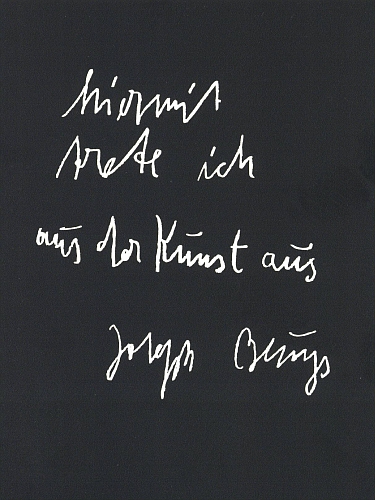Is every human being an artist?
Central to achieving genuine sustainability is the adoption of a new understanding of growth and development. In this context, the idea of social sculpture offers an as yet almost entirely untapped resource - with huge potential.
To me, social sculpture is something like a new art discipline, but one which radically transgresses the typical boundaries of the art world.
Social sculpting takes hold of not just physical, but also mental, psychic and spiritual matter. The raw materials of social sculpture are the ways we think, feel, perceive, speak, listen to and talk with each other.
Whatever we bring into the world begins as a thought, an imagining or an intention before it materialises: turning into a landmine or a school; torture or care; bio-piracy or fair trade; agro-industrial exploitation or as ecologically sustainable farming.
Thus, the primary aim of social sculpture is not to bring objects into the world, but rather to reshape the deformations of our society into forms that can really be considered humane and in the interest of the common good.
This positive cultural evolution draws on the perspective through which Joseph Beuys expanded the traditional concept of art, expressed through his statement: every human being is an artist.

